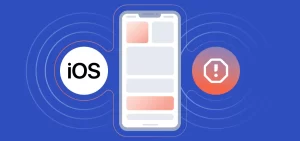The Android ecosystem is known for its openness and variety. Unlike iOS, which is tightly controlled and operates only on Apple hardware, Android runs on thousands of devices from hundreds of manufacturers across the globe.
While this diversity fuels innovation, competition, and consumer choice, it also introduces a unique and persistent challenge: maintaining software stability.
App developers and even Google itself constantly grapple with unpredictable behavior, inconsistent performance, and difficult-to-diagnose bugs—all resulting from the vast landscape of hardware configurations.
The Scope of Hardware Diversity in the Android Ecosystem
Android powers everything from high-end flagship smartphones and tablets to budget devices, smart TVs, wearables, car infotainment systems, and even appliances. Each of these devices may differ drastically in hardware specifications such as:
| Component | Variability Across Devices |
|---|---|
| CPU | Snapdragon, MediaTek, Exynos, Tensor, Kirin, etc. |
| GPU | Adreno, Mali, PowerVR, ARM, etc. |
| RAM | From 1 GB to 16+ GB, with different speeds and generations |
| Display Types | LCD, OLED, AMOLED, with varying refresh rates and resolutions |
| Storage Interfaces | eMMC vs UFS (multiple generations) |
| Sensors | Different gyroscopes, proximity sensors, fingerprint modules, etc. |
| Modems and Radios | Varying support for LTE, 5G bands, Wi-Fi generations, etc. |
Each unique combination creates a different execution environment. An app or OS feature that runs smoothly on one configuration may crash, stutter, or behave erratically on another.
Fragmentation: The Core Challenge Behind Stability
This hardware diversity leads directly to what is commonly referred to as fragmentation—the existence of many different versions of Android and hardware combinations in active use at any one time.
Effects of Fragmentation:
- Inconsistent User ExperienceOne app may behave perfectly on a Pixel phone but exhibit bugs on a Motorola or Xiaomi device.
- Delayed Updates and Bug FixesOEMs often customize Android heavily, making timely updates and patches harder to implement universally.
- Increased Testing ComplexityDevelopers must test their apps across as many device profiles as possible, which becomes expensive and time-consuming.
- Hardware Driver InstabilityProprietary drivers developed by chipmakers may not be optimized or updated in sync with Android’s changes.
Examples of Real-World Stability Challenges
To understand how serious the consequences of hardware diversity can be, consider these scenarios:
- App Crash on Specific GPUs: A game developed with certain shaders optimized for Adreno GPUs might crash or render incorrectly on devices with Mali GPUs.
- Camera API Conflicts: Camera functionality may break when manufacturers implement proprietary imaging pipelines that deviate from Android’s Camera2 API standard.
- Battery Optimization Bugs: Background services could be killed unpredictably on devices with aggressive memory management (common in brands like Huawei or Oppo).
Developer Constraints and Testing Limitations
Given the hundreds of devices released yearly, it is nearly impossible for app developers or even Google to conduct exhaustive testing.
| Testing Constraint | Explanation |
|---|---|
| Limited Emulator Accuracy | Emulators don’t perfectly mimic real hardware performance or behavior. |
| Budget and Logistics | Smaller teams can’t afford dozens of physical test devices. |
| OEM Customization Variants | Different regions might get devices with different chipsets or drivers. |
| API Level Disparities | Android updates roll out unevenly; developers must support older versions too. |
Even automated testing solutions like Firebase Test Lab or AWS Device Farm can only go so far—they still can’t replicate real-world user interaction or obscure driver bugs.
Why iOS Has an Easier Path to Stability
To contrast, Apple develops iOS solely for its own limited set of devices. There are fewer models, all with uniform chip architectures, standardized display technologies, and tightly integrated software. That vertical integration allows Apple to test more rigorously and push updates universally.
By comparison:
| Aspect | Android | iOS |
|---|---|---|
| Hardware Variants | Thousands of models across many OEMs | Limited models per year |
| Update Timeliness | Depends on OEM and carrier | Immediate and universal |
| Driver Maintenance | OEM responsibility | Apple-controlled |
| Testing Complexity | High, due to fragmentation | Low, due to vertical control |
What Google and OEMs Are Doing to Address the Issue
Despite these challenges, progress has been made in recent years. Google and its partners have rolled out several initiatives to combat instability caused by hardware diversity:
1. Project Treble
Launched in Android 8.0, Treble modularized the OS framework and the vendor-specific hardware implementation. This separation allows OEMs to push Android updates more easily without needing to rework low-level drivers.
2. Project Mainline
Introduced in Android 10, Mainline enables Google to push critical system component updates (like media codecs, DNS, and security modules) via Google Play, bypassing OEM update cycles.
3. Android Compatibility Test Suite (CTS)
OEMs must pass a comprehensive compatibility test suite to pre-install Google apps. This enforces consistency in APIs and behavior across certified devices.
4. Standardized APIs for Hardware
Google has been moving toward defining stricter standards for camera, biometrics, and sensor APIs to reduce deviation among devices.
What Developers Can Do
While developers can’t control the hardware their apps run on, they can take certain proactive measures to minimize instability:
- Use official SDKs and APIs only: Avoid relying on undocumented hardware behavior.
- Leverage crash reporting: Tools like Firebase Crashlytics can provide device-specific logs.
- Implement graceful degradation: If a feature isn’t supported on a device, provide a fallback or disable it.
- Maintain minimum SDK versions thoughtfully: Dropping older Android versions can reduce fragmentation burden.
- Test on popular device classes: Focus on top-selling models across regions for efficient coverage.
What Users Can Do to Improve Stability
Even end-users have some control when facing app or system instability due to hardware diversity:
- Stick with reputable OEMs: Devices from brands like Google, Samsung, or OnePlus generally have better software support.
- Avoid heavy OEM skins: Stock Android or lighter UI layers tend to be more stable.
- Limit background apps: Low-end hardware struggles with resource management, so minimize multitasking.
- Stay updated: Apply firmware updates as they become available.
- Use known-stable apps: Read reviews to identify apps that behave well on your device model.
Hardware diversity is both Android’s greatest strength and its biggest challenge. It fosters competition, variety, and global reach, but it also makes achieving consistent software stability extraordinarily difficult. Every smartphone or tablet becomes a new variable in an already complex equation.
Through system-level changes like Project Treble and Project Mainline, Google is working to tame this complexity. Developers are encouraged to adopt flexible, standards-based practices and leverage robust testing tools to mitigate risks. And users can make informed choices to minimize their own exposure to instability.
Ultimately, while Android’s hardware diversity will never fully go away—and shouldn’t—the ecosystem can evolve to better manage its consequences, resulting in a smoother, more stable experience for everyone.



